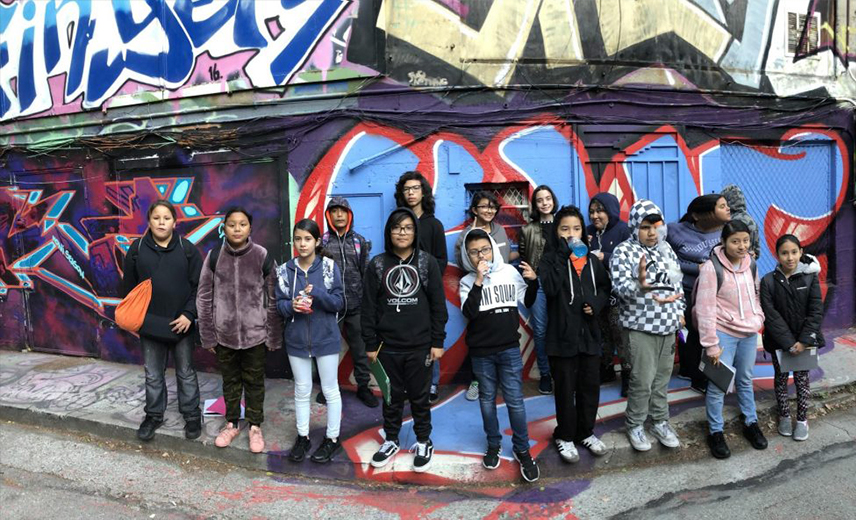Leaving Their Mark:
Students in UnidosUS Affiliate Jamestown Community Center’s CASA Program Learn How to Create Progress in Their Neighborhood

Safe, vibrant, walkable cities. That’s what most city dwellers would like their communities to be, but how do they start creating them?
Last month, middle school students participating in the UnidosUS leadership program CASA (Cultura, Aprendizaje, Servicio, Acción) at San Francisco’s Jamestown Community Center walked the streets of their two adjoining neighborhoods—one affluent, one more working class—in an effort to figure that out.
Sponsored by the nationwide insurance company State Farm, the CASA program helps youth become civically engaged right where they live. Through the program’s Community Walk, students from James Lick Middle School in Noe Valley and from Buena Vista Horace Mann Middle School in the Mission District spent a day together identifying and mapping what they considered the challenges and assets of their respective corners of the community. Then, they discussed how to leverage the community’s unifying values, norms, and traditions to make lasting changes.
One of the first challenges they found in the Mission District was the presence of a liquor store on almost every corner, which suggested that business people were targeting their community with easy access to a product that is for many people a distraction and a vice. They also noted that many of the streets, and more specifically the alleys were dirty and covered in litter. They also noticed a correlation between these issues and a higher population density.
“The Mission District is more crowded than Noe Valley. It’s more crowded in the Mission District because there’s stores, banks, and buses. Because it’s more crowded, there’s a lot more violence, I saw a fight in the Mission a day after the walk,” said Kimberly Andrade, a sixth grader at Buena Vista Horace Mann Middle School.
 At the same time, they saw how locals had sought to beautify the walls with murals and graffiti tags representing the Mission District’s predominately Latino culture. They also took note of the large number of fruit and produce markets which nourish the people, and the consistency of public transportation.
At the same time, they saw how locals had sought to beautify the walls with murals and graffiti tags representing the Mission District’s predominately Latino culture. They also took note of the large number of fruit and produce markets which nourish the people, and the consistency of public transportation.
In the more affluent Noe Valley, they found cleaner streets and updated buildings, as well as signs of lower crime.
“There’s no shoes on telephone poles. That means there’s no signs of murders, or anything bad happening. Shoes on telephone poles represent areas where people have been killed,” noted Nathan Franco, an eighth grader at James Lick Middle School.
“One academic skill youth have been able to grow in has been critical thinking analysis. It was very interesting to see the youth compare and contrast both community walks,” said Evelyn Calderon, assistant manager at Buena Vista Horace Mann Middle School, noting students quickly recognized how two neighboring communities could experience vastly different social and economic realities at the same time. As a result of this work, many of the students will begin looking for ways to promote healthier food and beverage sales in in the Mission District’s most underserved corners.

One of the highlights of the walk was a visit to the studio of local artist Sirron Norris, one of the creators of the animated comedy series Bob’s Burgers. Norris told students the show was actually based on the Mission District, and that some of its buildings are actually depicted in it. And while nobody went around tagging the streets with graffiti, Norris did invite the students to leave their mark on a canvas he was painting—perhaps the first they will make on the true backdrop of their city.

RELATED CONTENT
Weakening the Community Reinvestment Act Will Make It Harder for Latino Families to Get Ahead

